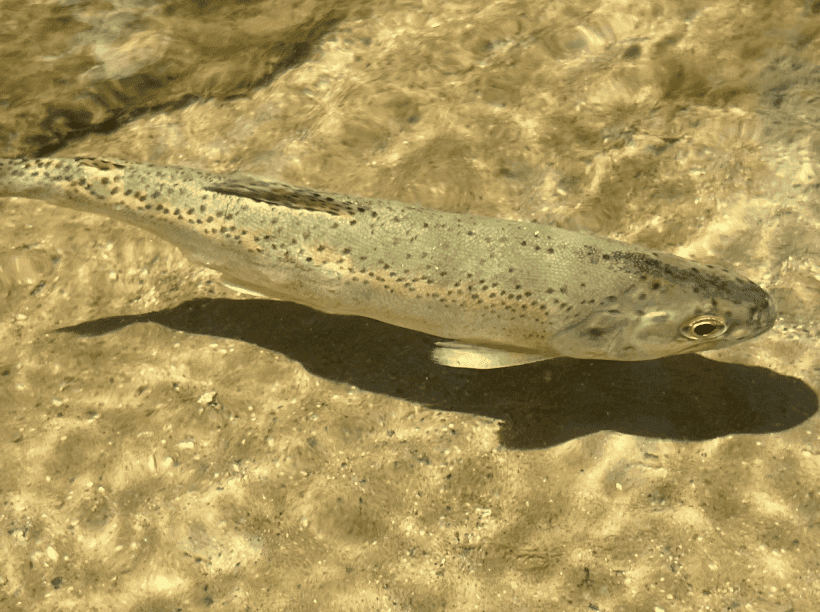Other names: Steelhead trout
The steelhead, a migratory form of rainbow trout (Oncorhynchus mykiss), is a highly sought-after fish known for its strength and adaptability. Unlike resident rainbow trout, steelhead migrate to the ocean and return to freshwater to spawn. This species is prized in sport fishing for its powerful runs and aerial acrobatics when hooked, making it a challenging and rewarding catch for anglers.

Other names
Steelhead trout
![]() Length
Length
~51" (max 110)
![]() Weight
Weight
~2" (max 25)
![]() Water
Water
Fresh, brackish, salt
![]() Water Temp
Water Temp
14-17° F
![]() Depth
Depth
1-11 ft
-
-
-
-
-
-
-
-
Steelhead begin their life in freshwater rivers and streams, where they spend their early years before migrating to the ocean
In the ocean, they inhabit open waters but stay relatively close to the coast, feeding on smaller fish and invertebrates
After several years at sea, they return to their natal rivers to spawn, often traveling long distances upstream
Anglers often find steelhead in deeper river pools and riffles during their spawning runs, especially near obstacles like fallen trees or large rocks
Steelhead spawn in late winter to early spring, with females laying eggs in gravel nests, known as redds, in fast-flowing sections of rivers and streams
Unlike many salmon species, some steelhead can survive spawning and return to the ocean, making them iteroparous, capable of spawning multiple times
Juveniles, known as "smolts," stay in freshwater for a year or two before migrating to the ocean, where they grow rapidly
During the spawning migration, steelhead exhibit aggressive behavior and are more likely to strike at lures, providing prime fishing opportunities for anglers